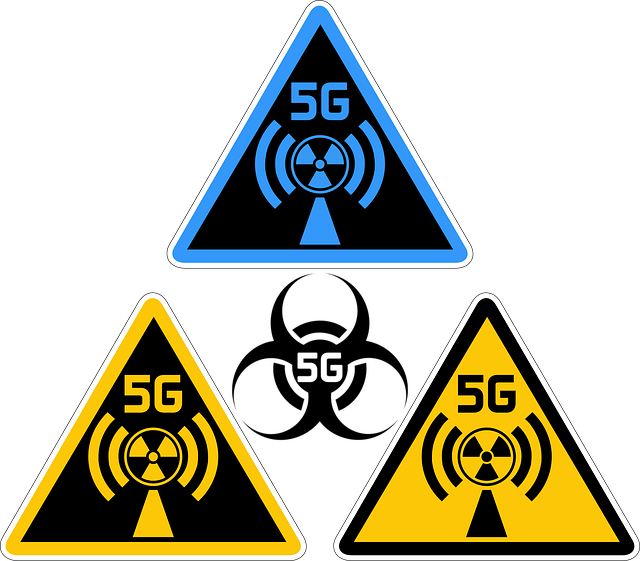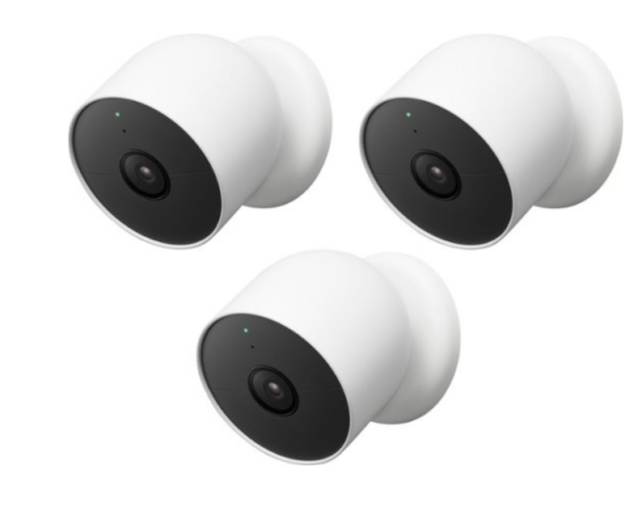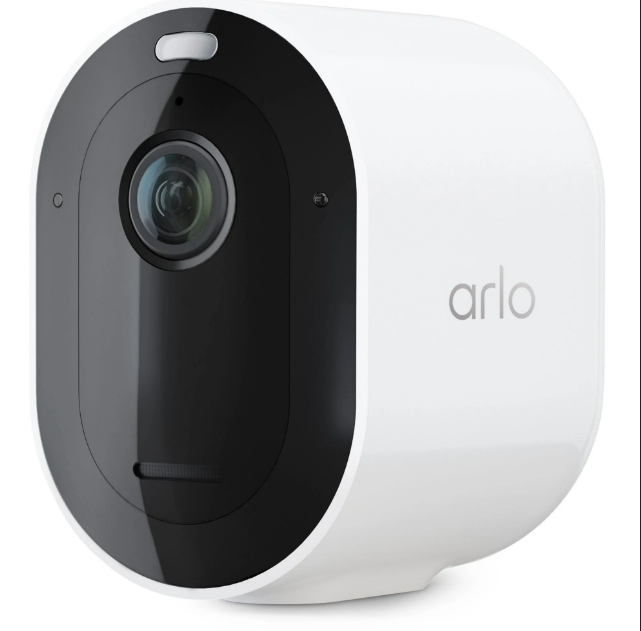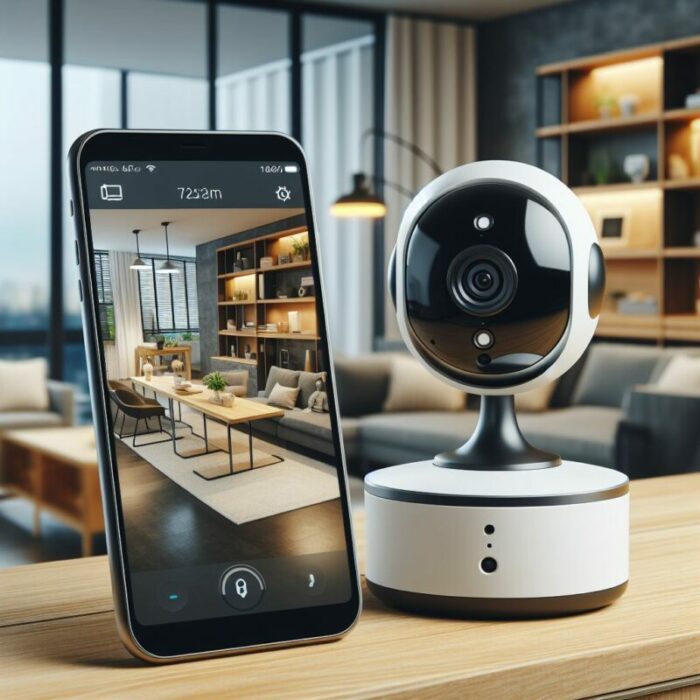Best Wireless Indoor Camera
In this fast-changing world choosing the best wireless indoor camera is paramount. Our homes need safety and security more than ever before. Many homeowners are looking for high-tech ways to protect their loved ones and valuables from property crimes and security risks. Indoor wireless camera systems are essential for modern home security systems. They offer many benefits over traditional wired cameras, such as easy installation, remote access, and flexibility.
With indoor wireless cameras, homeowners can take a proactive approach to home security. They can watch their properties remotely and get instant alerts if something suspicious happens. Indoor wireless cameras are different from traditional security measures, such as alarm systems or door locks. They offer real-time surveillance and actionable insights, which help homeowners act quickly to safeguard their homes and loved ones.
The best wireless Indoor cameras are essential for any comprehensive home security system. They have many features and benefits that make them ideal for modern living. They can record high-definition videos, integrate with smart home devices, and offer a range of advantages that improve both safety and convenience. In this article, we will explore the best indoor wireless security cameras and reveal how they can help you create a safer, more secure home environment.
Table of Contents
Understanding Indoor Wireless Cameras
Indoor wireless camera systems are a great innovation in home security technology. They give homeowners more freedom, comfort, and confidence. They do not need wires or cables to send data, unlike wired cameras. They use wireless connectivity to provide smooth surveillance without any limitations.
Whether you want a mini camera that is barely noticeable or a dome camera that offers a wider view, you can find an indoor wireless camera that fits your style and needs. These devices have sleek, compact designs that blend in with any modern home decor. The best wireless indoor cameras come in various shapes and sizes for different installation options and preferences.
Indoor wireless cameras can send high-definition video footage to devices like smartphones, tablets, or computers. This lets homeowners monitor their properties from anywhere in the world, in real time. They can enjoy peace of mind whether they are at work, on vacation, or at home.
The best wireless Indoor cameras have various features that make them more effective for security purposes, besides their remote monitoring capabilities. For instance, some cameras have night vision technology that allows them to see clearly in the dark, motion detection sensors that send alerts when they detect any unusual activity, and two-way audio communication that enables real-time interaction with either family members or intruders.
An indoor wireless camera system can also work well with other smart home devices and systems, enabling easy automation and control. They can trigger lights or sirens when they sense motion or work with voice assistants for hands-free operation. Wireless indoor cameras provide convenience and functionality that was once unthinkable.
The following section will examine the main aspects to look for in an indoor wireless camera for your home security needs. We will discuss how video quality, storage options, and other factors affect the performance and dependability of these vital security devices.
Key Features of a Best Wireless Indoor Camera
To choose the best wireless indoor camera for your home security, you should look at some key features that make it effective and reliable. These features affect not only how well the camera records the surveillance video, but also how well it can identify and react to possible security risks. Here are some important factors to consider:
- High-Definition Video Quality: The clarity and resolution of the video footage captured by the best indoor wireless camera are crucial for identifying intruders or suspicious activity. Look for cameras that offer at least 1080p HD resolution, ensuring crisp and detailed images even in challenging lighting conditions.
- Night Vision Capabilities: Since security threats can occur at any time of day, indoor wireless camera systems need to have reliable night vision capabilities. Choose cameras equipped with infrared (IR) LEDs or low-light sensors that can capture clear footage in complete darkness, providing round-the-clock surveillance.
- Motion Detection: Motion detection technology allows the best wireless indoor cameras to automatically detect and record any movement within their field of view. Look for cameras with customizable motion detection settings, including sensitivity levels and motion zones, to minimize false alarms and ensure accurate detection of relevant events.
- Two-Way Audio: Two-way audio functionality enables homeowners to communicate with visitors or potential intruders through the indoor wireless camera. This feature can be particularly useful for remotely monitoring children or pets, providing instructions to delivery personnel, or deterring intruders by speaking to them directly.
- Remote Access: The ability to remotely access live video feeds and recorded footage from your indoor wireless camera system is essential for staying connected and informed, even when you’re away from home. Choose cameras that offer intuitive mobile apps or web interfaces, allowing you to monitor your property from anywhere with an internet connection.
- Storage Options: Consider the storage options available for storing recorded footage from your indoor wireless camera. Some cameras offer cloud storage solutions, which securely store footage online and provide convenient access from any device. Others may support local storage options such as microSD cards or network-attached storage (NAS) devices.
The best indoor wireless security systems are a great option for home security, but how do you pick the best one for your situation? You need to consider some key features and how they fit your needs and preferences. Next, we will also show you how to install and set up your indoor wireless camera in a few simple steps, so you can have a hassle-free experience as a homeowner.
Installation and Setup of Indoor Wireless Camera
To set up an indoor wireless camera, you need to follow a few simple steps. However, make sure you read the instructions from the manufacturer before you begin. This will help you avoid any problems with the camera’s functionality and safety. Here’s how you can install your indoor wireless camera:
- Choose the Right Location: Before installing your indoor wireless camera, carefully consider the best location to place it. Aim for a vantage point that provides a clear view of the area you want to monitor, while also ensuring the camera is out of reach of potential tampering.
- Power Source: Most indoor wireless cameras are powered either by batteries or by connecting to a power outlet. If your camera uses batteries, make sure they are fully charged before installation. For cameras that require a power outlet, ensure there is a nearby power source within reach of the camera’s cable.
- Mounting Options: Depending on the design of your indoor wireless camera, you may have different mounting options available, such as wall mounting, ceiling mounting, or freestanding placement. Follow the manufacturer’s instructions to securely mount the camera in your chosen location.
- Connect to Wi-Fi: Once the camera is mounted, follow the instructions provided to connect it to your home Wi-Fi network. This usually involves using a smartphone app or a web interface to scan for available Wi-Fi networks and enter your network credentials.
- Setup and Configuration: After connecting to Wi-Fi, you may need to complete the camera’s setup and configuration process. This typically involves creating an account with the camera manufacturer’s cloud service, setting up motion detection settings, adjusting video quality settings, and configuring any additional features.
- Test the Camera: Once the setup process is complete, it’s essential to test the camera to ensure it’s functioning correctly. Use the camera’s mobile app or web interface to view live video feeds, adjust camera angles if necessary, and test features such as motion detection and two-way audio.
- Optimize Placement and Settings: After testing the camera, take some time to optimize its placement and settings for optimal performance. Adjust the camera’s field of view, sensitivity levels, and other settings as needed to minimize false alarms and ensure accurate surveillance.
This guide shows you how to install and configure your indoor wireless camera for optimal home security. Next, we will discuss how indoor wireless cameras work with smart home systems, offering you more security and comfort options.
Integration with Smart Home Systems
Indoor wireless cameras work together with other smart home devices to create a complete smart home system. These cameras can connect with various smart home platforms and devices, giving you more security and comfort by automating and controlling them. Here are some ways to use indoor wireless cameras with smart home systems:
- Compatibility with Smart Home Platforms: Indoor wireless cameras often support popular smart home platforms such as Amazon Alexa, Google Assistant, and Apple HomeKit. This compatibility allows users to control their cameras using voice commands and integrate them into custom smart home routines and scenes.
- Automation Possibilities: By integrating indoor wireless cameras with other smart home devices such as smart lights, door locks, and motion sensors, homeowners can create sophisticated automation routines to enhance their home security. For example, motion detection triggers from the camera can automatically turn on lights or activate sirens to deter intruders.
- Remote Control and Monitoring: Smart home integration enables users to control and monitor their indoor wireless cameras remotely using smartphone apps or voice assistants. Whether you’re at home or away, you can check live video feeds, receive alerts, and adjust camera settings with ease.
- Enhanced Security Features: Indoor wireless cameras can work in tandem with other smart home security devices to provide comprehensive protection for your home. For example, integrating cameras with smart doorbell cameras allows for seamless video verification of visitors, while pairing cameras with smart locks enables remote monitoring and control of entry points.
- Customization and Personalization: Smart home integration offers endless possibilities for customization and personalization. Users can create custom rules and schedules to automate camera actions based on specific events or conditions, tailoring their home security system to meet their unique needs and preferences.
Indoor wireless cameras are more than just security devices. They are smart guardians that use smart home integration to enhance and protect your home environment.
Privacy and Security Considerations
Indoor wireless cameras can enhance your security, but you also need to protect your privacy and data. Here are some important factors to consider:

- Secure Network Connection: Ensure that your indoor wireless cameras are connected to a secure Wi-Fi network with strong encryption protocols. Avoid using default passwords and regularly update your network credentials to prevent unauthorized access.
- Enable Encryption: Many indoor wireless cameras offer encryption features to protect the privacy of your video feeds and data. Enable encryption settings whenever possible to prevent eavesdropping and unauthorized viewing of your footage.
- Update Firmware Regularly: Keep your indoor wireless cameras up to date by installing firmware updates as soon as they become available. These updates often contain security patches and bug fixes that address vulnerabilities and improve overall system security.
- Physical Security Measures: Consider implementing physical security measures such as password-protected access to your camera’s settings and features. Additionally, use physical camera covers or privacy modes to block the camera’s lens when not in use, preventing accidental or unauthorized recording.
- Review Privacy Policies: Before purchasing and installing indoor wireless cameras, review the manufacturer’s privacy policies and terms of service. Ensure that they align with your expectations regarding data collection, storage, and sharing, and choose reputable brands that prioritize user privacy and security.
By following these privacy and security best practices, you can ensure that your indoor wireless cameras protect your home without compromising your privacy or security. You can have peace of mind that your cameras are serving you well without exposing you to any dangers.
3 Best Indoor Wireless Security Cameras
If you want to choose an indoor wireless camera that meets your home security needs, you might be interested in some of the most popular and well-reviewed options that many consumers prefer. Here are three of the best indoor wireless cameras that you can find on the market today:
- Nest Cam Indoor
Overview: If you are looking for a dependable and versatile indoor security camera, you might want to consider the Nest Cam Indoor. This device has a stylish and contemporary design that fits well with any home style. It also has a powerful motion detection feature and a high-definition 1080p video resolution that delivers sharp and vivid images, whether it is day or night.

Features: With the Nest Cam Indoor, you can enjoy various features such as night vision that lets you monitor your home 24/7, two-way audio that allows you to talk and listen through the camera, and remote access that lets you control the camera from your phone using the Nest app. You can also connect the camera with other Nest devices and use Google Assistant to control it with your voice or create smart routines.
Pros:
- Excellent video quality with 1080p HD resolution.
- Advanced motion detection with customizable alerts.
- Seamless integration with other Nest products and smart home platforms.
- Easy setup and installation process.
Cons:
- Requires a subscription for cloud storage and advanced features.
- Higher price point compared to some other indoor wireless cameras.
- Arlo Pro 3
Overview: Whether you want to monitor your home indoors or outdoors, the Arlo Pro 3 is a wireless camera that can handle any situation. It has a 2K HDR resolution that captures every detail with stunning clarity and color. It also has a color night vision feature that lets you see what’s happening even in the dark. The Arlo Pro 3 is weather-resistant, so you can place it anywhere without worrying about rain or snow.

Features: With the Arlo Pro 3, you can enjoy many benefits, such as advanced motion detection that lets you set custom activity zones, two-way audio that lets you talk remotely, and a built-in siren that scares off intruders. You can also store your video recordings on the cloud for free for up to 30 days and connect your camera with Amazon Alexa, Google Assistant, or Apple HomeKit for easy smart home integration.
Pros:
- High-resolution 2K HDR video quality with color night vision.
- Customizable activity zones for precise motion detection.
- Weather-resistant design for indoor and outdoor use.
- Free cloud storage for up to 30 days of video recordings.
Cons:
- Relatively higher price point compared to other indoor wireless cameras.
- Requires a base station for connectivity, which may add to the setup cost.
- Wyze Cam v3
Overview: If you are looking for a wireless camera that works well indoors and does not cost much, the Wyze Cam v3 might be a good option for you. This camera has amazing features and performance for its price range. It can record high-quality 1080p HD videos and has improved night vision to capture clear images even in dark settings.
Features: With the Wyze Cam v3, you get a feature-rich camera that lets you monitor your home or business with ease. You can set up custom zones for motion detection, talk to visitors or intruders through the built-in speaker and microphone, and access up to 14 days of cloud-stored video clips for free. Plus, you can connect the camera to Amazon Alexa or Google Assistant devices for voice commands and smart home integration.
Pros:
- Affordable price point without compromising on features or performance.
- High-resolution 1080p HD video quality with enhanced night vision.
- Customizable motion detection zones for precise alerts.
- Free cloud storage for up to 14 days of video recordings.
Cons:
- Limited weather resistance, suitable for indoor use only.
- Some users may experience connectivity issues or lag with the mobile app.
The table below compares the main characteristics and distinctions of the Nest Cam Indoor, Arlo Pro 3, and Wyze Cam v3. These are indoor wireless cameras that vary in their features and prices. You can select the one that meets your needs and preferences the most.
| Feature | Nest Cam Indoor | Arlo Pro 3 | Wyze Cam v3 |
|---|---|---|---|
| Video Quality | 1080p HD | 2K HDR | 1080p HD |
| Night Vision | Yes (IR LEDs) | Yes (Color) | Yes (Enhanced) |
| Motion Detection | Advanced (Customizable) | Advanced (Customizable) | Advanced (Customizable) |
| Activity Zones | Yes | Yes | Yes |
| Two-Way Audio | Yes | Yes | Yes |
| Remote Access | Yes (Nest mobile app) | Yes (Arlo mobile app) | Yes (Wyze mobile app) |
| Cloud Storage | Subscription required | Free (up to 30 days) | Free (up to 14 days) |
| Integration with Smart Home | Google Assistant | Amazon Alexa, Google Assistant, Apple HomeKit | Amazon Alexa, Google Assistant |
| Weather Resistance | Indoor Use Only | Indoor/Outdoor Use | Indoor Use Only |
| Price | $129.99 | $199.99 (base station required) | $35.98 (pack of 2) |
Real-World Applications
Indoor wireless cameras are not only useful for traditional home security but also for many other purposes in different situations. Here are some examples of how indoor wireless cameras can help in various real-world scenarios:
- Pet Monitoring: Keep an eye on your furry friends while you’re away by placing indoor wireless cameras in areas where they spend time. Whether it’s checking in on a mischievous cat or ensuring your dog is behaving, indoor cameras offer peace of mind for pet owners.
- Child Supervision: Indoor wireless cameras can serve as virtual babysitters, allowing parents to monitor their children from another room or while they’re out of the house. Keep an eye on naptime, playtime, and bedtime routines, and receive alerts if any unexpected activity occurs.
- Elderly Care: For families with elderly relatives living alone, indoor wireless cameras provide an extra layer of safety and reassurance. Keep an eye on your loved ones and receive alerts for unusual activity or emergencies, ensuring they receive timely assistance when needed.
- Package Delivery: With the rise of online shopping, package theft has become a common concern for homeowners. Indoor wireless cameras can help deter porch pirates and provide evidence in the event of theft, ensuring your deliveries arrive safely.
- Home Automation: Integrate indoor wireless cameras with smart home automation systems to create custom routines and scenes based on your preferences. From turning on lights when motion is detected to adjusting thermostat settings when you’re away, indoor cameras can enhance the overall functionality and convenience of your smart home.

Indoor wireless cameras can do more than just provide security for homeowners. They can also be used in various real-world scenarios to enhance their convenience and functionality. Here are some of the benefits of using these cameras beyond security purposes.
Best Wireless Indoor Camera Reviews
The Nest Cam Indoor boasts many impressive features, but some users have pointed out that the need to subscribe for cloud storage and extra functions could be a drawback for those who want to save money. The Nest Cam Indoor is still a top choice for homeowners who want a dependable and versatile indoor wireless camera.
The Arlo Pro 3 delivers excellent performance and features, but it has some drawbacks. One is that it needs a base station for connectivity, which may increase the initial setup cost. Another is that it is more expensive than some other indoor wireless cameras, which may not suit budget-conscious consumers. However, the Arlo Pro 3 is still a good choice for those who want high-quality indoor surveillance.
The Wyze Cam v3 is an excellent value for money, but it may not work flawlessly for everyone. Some users have experienced connectivity problems or delays with the mobile app, which can be frustrating if you want smooth performance. Also, the camera is designed for indoor use only, so it may not be suitable for outdoor settings. However, if you are looking for a cheap and feature-packed indoor wireless camera, the Wyze Cam v3 is still another option.
Maintenance and Troubleshooting
Indoor wireless cameras require regular maintenance and troubleshooting to maintain their performance and durability. Follow these tips to keep your cameras in good condition:
- Clean the Lens: Regularly clean the lens of your indoor wireless cameras to remove dust, dirt, and smudges that can affect image quality. Use a soft, lint-free cloth or lens cleaning solution to gently wipe away any debris, being careful not to scratch the lens.
- Check Power Sources: Periodically check the power sources of your indoor wireless cameras to ensure they are functioning correctly. Replace batteries as needed or troubleshoot any issues with power adapters or cables to prevent interruptions in surveillance.
- Test Connectivity: Verify that your indoor wireless cameras are connected to your home Wi-Fi network and are communicating properly with your mobile devices or computer. If you experience connectivity issues, try rebooting the camera or troubleshooting your network connection to resolve the issue.
- Update Firmware: Stay updated with firmware updates for your indoor wireless cameras by regularly checking for new releases from the manufacturer. Firmware updates often contain bug fixes, performance improvements, and security patches that can enhance the overall reliability and security of your cameras.
- Review Storage Capacity: Monitor the storage capacity of your indoor wireless camera’s storage device, whether it’s a cloud storage service, microSD card, or network-attached storage (NAS) device. Ensure that you have sufficient storage space to accommodate recorded footage and consider upgrading or expanding your storage capacity if needed.
By following these maintenance and troubleshooting tips, you can keep your indoor wireless cameras in top condition and ensure they continue to provide reliable security monitoring for your home.
Conclusion
To sum up, indoor wireless cameras are essential devices for improving home security, as they offer continuous monitoring and reassurance to homeowners. They have sophisticated features that allow them to integrate smoothly with smart home systems and suit various real-world scenarios. Indoor wireless cameras provide unmatched comfort and safety for contemporary lifestyles.
Indoor surveillance cameras are useful for various security purposes, such as watching your home, pets, children, or packages when you are not around. To make the most of your indoor wireless cameras, you should follow these tips: prioritize privacy and security, perform regular maintenance, and use smart home integration. These tips will help you enhance the effectiveness and reliability of your indoor wireless cameras, and ensure the safety of your family and belongings.
Thank you for reading this article. I hope it gave you some useful information to help you choose your wireless indoor security cameras.
If you want to learn more, check out my next article on the top 5 home security systems and visit my other website for detailed reviews on the latest products. I welcome your feedback and suggestions for future topics.
Willie McCain

